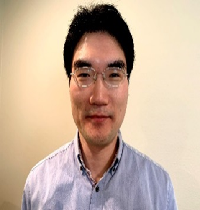
Title : Neuron-Specific IL-1 Receptor Accessory Protein (AcPb) Mediates Oncogenic Pathways Triggered by Sleep Loss
Name : Yool Lee
University : Washington State University
Country : USA
Download AbstractAbstract:
Interleukin-1β (IL1), a pleiotropic cytokine, is involved in sleep regulation, tumor ontogeny, and immune responses. IL1 receptor adaptor proteins, including the IL1 receptor accessory protein (AcP), and its neuron-specific isoform, AcPb, are required for IL1 signaling. The AcPb isoform is resultant from alternate splicing of the AcP transcript. Our previous studies using AcPb null (AcPb-/-) mice characterized its participation in sleep regulation and emergent neuronal/glial network properties. Here, we investigated the impact of acute sleep disruption (SD) on brain cancer-related pathways in wild-type (WT) and AcPb-/- mice, employing RNA sequencing methods. In WT mice, SD increased AcPb mRNA levels, but not AcP mRNA, confirming prior similar work in rats. Transcriptome and pathway enrichment analyses demonstrated significant alterations in cancer, immune, and viral disease-related pathways in WT mice after SD, which were attenuated in AcPb-/- mice including multiple upregulated Src phosphorylation-signaling-dependent genes associated with cancer progression and metastasis. Our RNAseq findings, were analyzed within the context of The Cancer Genome Atlas Program (TCGA) data base; revealing an upregulation of sleep- and cancer-linked genes (e.g., IL-17B, IL-17RA, LCN2) across various tumors, including brain tumors, compared to normal tissues. Sleep-linked factors, identified through TCGA analyses, significantly impact patient prognosis and survival, particularly in low-grade glioma (LGG) and glioblastoma multiforme (GBM) patients. Overall, our findings suggest that SD promotes a pro-tumor environment through AcPb-modulated pathways.
Biography:
Dr. Yool Lee is a chronobiology researcher whose work centers on the molecular and cellular mechanisms linking circadian rhythms to physiology and disease. Dr. Lee earned their B.A., M.S., and Ph.D. from Seoul National University in South Korea, where they specialized in circadian clock biology. They completed postdoctoral research at the University of Pennsylvania, discovering key clock-regulating molecules and elucidating their roles in disease processes, particularly cancer. Currently, Dr. Lee serves as an Assistant Professor at Washington State University, where their research investigates how sleep and circadian disruption influence cancer pathogenesis and treatment response, in collaboration with clinicians to develop chronotherapeutic strategies. In recognition of their scientific contributions, Dr. Lee is a full member of Sigma Xi, The Scientific Research Honor Society.

Title : Neuroregenerative and Neuroplastic Properties of Dental Pulp Stem Cells - NestaCell®: Preclinical Insights and Clinical Advancements in Huntington’s Disease
Name : Irina Kerkis
University : Instituto Butantan
Country : Brazil
Download AbstractAbstract:
Dental pulp stem cells (DPSCs) are a unique subset of mesenchymal stem cells (MSCs) that can be isolated from the dental pulp of deciduous, adult, and wisdom teeth. Particularly, DPSCs derived from exfoliated deciduous (milk) teeth offer several compelling advantages: they are collected non-invasively during natural tooth shedding, are ethically acceptable, and represent a youthful source of stem cells with high proliferative and regenerative potential. Despite these features, DPSCs are less extensively studied than MSCs from bone marrow, adipose tissue, or umbilical cord, which currently dominate clinical research. A major limitation of DPSCs remains the relatively low cell yield per donor, posing challenges for systemic therapeutic applications that require clinical doses starting at 5 × 10⁵ cells/kg or higher. Over the past two decades, our group has developed and refined scalable protocols for the isolation, expansion, and cryopreservation of DPSCs under both research and Good Manufacturing Practice (GMP) conditions. Expanded DPSCs retain a stable phenotype and exhibit robust differentiation into osteogenic, chondrogenic, and neurogenic lineages. Beyond their multipotency, DPSCs secrete a rich repertoire of bioactive molecules with anti- inflammatory, anti-apoptotic, angiogenic, and neuroprotective effects. In preclinical models, these paracrine signals promote neuroregeneration by supporting neuronal survival, modulating glial responses, and enhancing neuroplasticity—a key process underlying functional recovery in neurodegenerative and traumatic conditions. Our preclinical studies have demonstrated that systemically administered DPSCs migrate to injury sites and ameliorate disease phenotypes in rodent models of neurodegeneration, including Huntington’s disease (HD). Treated animals showed improved motor behavior, decreased neuroinflammation, preserved neuronal integrity, and increased markers of synaptic remodelling, suggesting a role for DPSCs in both neuroprotection and the re-establishment of neural circuits. Based on these findings, we developed NestaCell®, a DPSC-based advanced therapy product intended for systemic administration in patients with HD, a devastating, autosomal dominant neurodegenerative disorder caused by a CAG expansion in the HTT gene. Currently, no disease-modifying treatments are approved for HD. NestaCell® underwent clinical testing beginning with a first-in-human, open-label study in HD patients, followed by a Phase II double-blind, randomized, placebo-controlled trial. Intravenous infusions of DPSCs were well tolerated at both tested doses (1 and 2 million cells/kg), with no serious treatment-related adverse events. Preliminary efficacy outcomes showed a statistically significant stabilization or improvement in motor and functional scores, particularly in the higher dose group. MRI-based analysis suggested a trend toward attenuation of white and grey matter volume loss, consistent with a neuroprotective and neuroplastic effect. Altogether, our findings highlight the translational potential of DPSCs as a systemic therapy for neurodegenerative diseases. Their accessibility, youthfulness, and broad biological activity—particularly in promoting neuroregeneration and neuroplasticity—make them a promising candidate for future regenerative medicine applications. Continued clinical development and optimization of manufacturing and delivery strategies are warranted to fully harness their therapeutic potential.
Biography:
Prof. Dr. Irina Kerkis holds degrees in Biology and Chemistry (1978) and a master’s in the same fields (1981) from the Federal University of Tomsk, as well as a Ph.D. in Cytogenetics from the Institute of Cytology and Genetics (1989). She earned recognition from the University of São Paulo for the title of Doctor in Sciences – Biology (Genetics) in 2004. Currently, she serves as Director of the Genetics Laboratory and is a Level VI researcher (Titular Professor) at the Butantan Institute. Dr. Kerkis has extensive experience and leadership in molecular biology, genetics, and stem cell research. Her current focus is on translational medicine, particularly the use of stem cells derived from human dental pulp for treating neurodegenerative and hematopoietic diseases. She has filed over 50 patents—20 of which have already been granted—related to large-scale production and therapeutic use of these stem cells. This innovative technology was licensed to Cellavita Pesquisas Científicas Ltda., which conducted two ANVISA-regulated clinical trials demonstrating safety and efficacy in Huntington’s disease. A phase 1/2 trial for COVID-19 was also completed. A phase III trial for Huntington’s disease is now underway. Prof. Dr. Kerkis has authored over 130 scientific articles and 22 book chapters, is a frequent keynote speaker at major scientific conferences, and has been the recipient of numerous prestigious awards.

Title : An integrative view of Data Analytics, Machine Learning and Transcriptomic analysis for biomarker and therapeutic discovery in neurodegenerative disorders – the BDASeq® analytical platform
Name : Rodrigo Pinheiro Araldi
University : Federal University of Sao Paulo
Country : Brazil
Download AbstractAbstract:
Neurodegenerative disorders have become increasingly prevalent due to the population aging, posing significant healthcare, economic and social challenges. Understanding their underlying mechanism can lead to earlier diagnosis and more effective treatments, improving quality of life for millions of patients. Given the absence of disease-modifying therapies for most neurodegenerative disorders, identifying new therapeutic targets is imperative. In this context, RNA sequencing (RNA-Seq) and modern analytical tools emerge as powerful tools to uncover druggable genes and biomarkers that could guide drug repositioning efforts or foster novel drug development through computer-aided drug design. However, the identification of differentially expressed genes (DEGs) that can serve as druggable genes and biomarkers can be influenced by the theoretical assumptions, normalization strategies, and statistical corrections for multiple comparisons (e.g., p-value adjustment or false discovery rate, FDR) employed by different differential expression analysis (DEA) methods. Given the lack of a universally accepted gold-standard method for DEA, BioDecision Analytics™ developed the Biomarker Discovery Algorithm (BDASeq®) (registered under Brazilian National Institute of Industrial Property number BR512025001097-4) to address these analytical challenges, providing a coherent process to process, integrate and analyze RNA-Seq data. Considered a prototypal neurodegenerative disease model due to its genetic etiology, Huntington disease (HD) has been extensively studied for more the 25,000 published studies along 150 years since its first report. However, the HD remains orphan of approved drugs able to modify its natural history. With the support of the International Huntington Association (IHA) and Brazil Huntington Association (ABH), we conducted the largest transcriptomic study for HD ever made. This study realized 353 brain and 233 blood eligible BioSamples from 15 independent BioProjects available in the Sequence Read Archive (SRA) database using the BDASeq® to uncover molecular targets and improve clinical trial outcomes. BDASeq® identified 5,834 differentially expressed genes (DEGs), including 394 putative druggable genes involved in neuroinflammation, metal ion dysregulation, and blood-brain barrier dysfunction; and 18 putative blood biomarkers. Pioneering, this study identified FTH1 as a promising therapeutic target and biomarker for HD. This is because, FTH1 was firstly identified as DEG in prefrontal cortex, in which the gene was observed as downregulated, and blood, in which it was found compensatory upregulated in a CAG repeat-dependent manner. This study highlights the potential of FTH1 as both a biomarker and a therapeutic target for HD. Based on the applicability for HD, BDASeq® was also used to identify druggable genes and biomarkers for Alzheimer’s and Parkinson’s diseases, allowing to identify potential druggable genes and biomarkers for these diseases. Advanced bioinformatics approaches like BDASeq® are crucial for uncovering novel targets in neurodegenerative disorders, paving the way for better therapeutic interventions and improved clinical trial outcomes.
Biography:
Prof. Dr. Rodrigo Pinheiro Araldi has a degree in Biological Science at the São Paulo State University (UNESP), with Master and Ph.D. in Biotechnology at the University of São Paulo (USP), with an internship period at the Dipartimento di Patologia of the Università degli Studi de Napoli Federico II (Naples, Italy). He also completed his postdoc trainee in Molecular Biology at the Paulista School of Medicine of the São Paulo Federal University (UNIFESP) and Butantan Institute. Currently, he is a professor of Molecular Biology and Bioinformatics at the Paulista School of Medicine (UNIFESP); professor of Biotechnology Project Management, Entrepreneurship, and Business at the Biotechnology MBA Program (UNIFESP). Dr. Araldi has more than 55 published articles, books, and book chapters, serving as member of the editorial board of 20 international reputed journals. Dr. Araldi is also the founder and Scientific Director of BioDecision Analytics, a pioneer company dedicated to Pharma Intelligence in Latin America. Dr. Araldi is also a full member of Sigma Xi (The Scientific Research Honor Society) and member of Brazilian Huntington’s disease Scientific Committee.

Title : Time is Brain: Detection of Nonconvulsive Seizures and Status Epilepticus during Acute Stroke Evaluation using Point-of-Care Electroencephalography
Name : Parshaw J. Dorriz
University : Providence Mission Medical Center
Country : USA
Download AbstractAbstract:
Objectives: Seizures are both a common mimic and a potential complication of acute stroke. Although EEG can be helpful to evaluate this differential diagnosis, conventional EEG infrastructure is resource-intensive and unable to provide timely monitoring to match the emergent context of a stroke code. We aimed to evaluate the real-world use and utility of a point-of-care EEG device as an adjunct to acute stroke evaluation. Materials and methods: We performed a retrospective observational cohort study at a tertiary care community teaching hospital by identifying patients who underwent point-of-care EEG monitoring using Rapid Response EEG system (Ceribell Inc., Sunnyvale, CA) during stroke code evaluation of acute neurological deficits during the study period from January 1, 2020 to December 31, 2020. We assessed the frequency of seizures and highly epileptiform patterns among patients with either confirmed strokes or stroke mimics. Results: Point-of-care EEG monitoring was used in the wake of a stroke code in 70 patients. Of these, neuroimaging and clinical information resulted in a diagnosis of stroke in 38 patients (28 ischemic, 6 hemorrhagic, 4 transient ischemic attack; median NIHSS score of 6.5 [IQR 2.0-12.0]) and absence of any stroke in 32 patients. Point-of-care EEG detected seizures and highly epileptiform patterns in 6 (15.8 %) stroke patients and 11 (34.4 %) stroke-mimic patients, including 2 patients with persistent expressive aphasia due to repeated focal seizures.
Biography:
Dr. Parshaw Dorriz is the chief of the department of neurology, the Co-medical director of the Mission neuroscience institute and adjunct assistant professor of neurology at Keck SOM at USC, as well as associate professor of clinical neurology at Charles drew university. With an expertise in epilepsy, his interest is in rapid EEG and AI advancements in thee assistance in detection of status and seizures at the bedside.

Title : Behavioral and Epigenetic Signatures of Neonatal Overfeeding: Pathways Towards Non-invasive Therapies
Name : Maria Florencia Rossetti
University : Institute of Health and Environment of the Coast
Country : Argentina
Download AbstractAbstract:
Early postnatal nutrition is a critical determinant of brain development, with long-lasting implications for cognition, emotional regulation, and neurochemical balance. The postnatal period represents a window of heightened plasticity during which nutritional and environmental inputs can shape neural circuits and influence lifelong mental health. In the present work, we used a well-characterized rat model of neonatal overfeeding to explore behavioral, molecular, and epigenetic consequences in adulthood, and to assess the potential of environmental interventions to reverse such effects. Neonatal overfeeding was induced by reducing litter size, thereby increasing milk per pup availability. Male offspring from small litters (SL; 4 pups/mother) and normal litters (NL; 10 pups/mother) were monitored for growth and metabolic parameters. On postnatal day (PND) 21, a subset of animals was euthanized for early-life molecular analyses, while the remainder were housed in standard laboratory conditions until adulthood (PND90). SL rats displayed greater body weight, increased adipose tissue , and elevated plasma cholesterol, glucose, and triglyceride levels at PND21 compared to NL controls, confirming the metabolic impact of early overfeeding. Interestingly, by adulthood these metabolic differences had normalized, suggesting a recovery in peripheral parameters. However, behavioral assessments revealed enduring neural consequences: in the elevated plus maze, SL rats exhibited increased anxiety-like behaviour, and in the episodic-like memory (ELM) task, they showed impaired performance relative to NL rats. At molecular level, region-specific changes in hippocampal neurosteroidogenic enzymes were detected. In SL rats, aromatase (P450arom) and 3α-hydroxysteroid dehydrogenase (3α-HSD) expression was reduced in CA1 but increased in CA3 and DG at PND21, while in adulthood, DG expression of P450arom was elevated and 5α-reductase 1 (5αR-1) decreased. DNA methylation analysis revealed altered promoter methylation patterns for these genes, many correlating with their expression levels, indicating epigenetic programming as a likely mechanism linking early overfeeding to persistent neural changes. To determine whether these alterations could be mitigated, a second experiment introduced an environmental enrichment (EE) paradigm. From PND21 to adulthood, SL and NL rats were housed under either standard conditions (SE; 4 rats/cage) or EE (8 rats/cage with varied objects and tunnels rearranged daily to promote sensory, cognitive, and social stimulation). At PND75, behavioral testing was repeated, and brains were collected at PND90 for molecular and epigenetic analyses. EE proved highly effective in attenuating the adverse outcomes of neonatal overfeeding. SL rats exposed to EE exhibited reduced anxiety-like behaviour and performed comparably to NL controls in the ELM task, suggesting a restoration of hippocampal-dependent memory processes. Moreover, EE normalized DG expression of P450arom and 5αR-1 and partially reversed associated DNA methylation changes. These findings underscore the potential of non- pharmacological, experience-based interventions to counteract the long-term neurodevelopmental impact of early nutritional imbalances. Taken together, our results highlight several key points: (1) Early overfeeding can induce persistent behavioral alterations and molecular signatures in brain regions critical for memory and emotional regulation. (2) Such changes are accompanied by stable epigenetic modifications, suggesting an enduring reprogramming of gene regulation. (3) Environmental enrichment, a non-invasive and easily implementable intervention, can ameliorate both behavioral and molecular deficits, offering a promising avenue for prevention and rehabilitation. These insights contribute to a deeper understanding of the mechanisms linking early-life nutritional environments to adult brain function and behavior. Identifying specific behavioral and epigenetic markers of risk could lead to the design of targeted, non-invasive interventions to promote cognitive resilience and mental health.
Biography:
Maria Florencia Rossetti is a Assistant Researcher and Professor at the Instituto de Salud y Ambiente del Litoral (ISAL), CONICET (Consejo Nacional de Investigaciones Científicas y Técnicas) and UNL (Universidad Nacional del Litoral), specializing in neuroendocrinology, behavioral neuroscience, and epigenetics. My research focuses on how early-life factors—such as maternal diet, neonatal overfeeding, and early pharmacological interventions (e.g., clonazepam)—impact brain development, epigenetic programming, and early cognitive decline, all of which are central issues in brain health. I use animal models to investigate the mechanisms underlying these cognitive impairments and to explore non- invasive strategies, such as enriched environments, to prevent or reverse their effects. I am strongly committed to interdisciplinary research, international collaboration and science outreach.
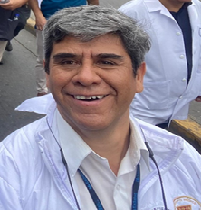
Title : Dental Deafferentation Causes Taste Dysfunctions
Name : Alejandro Gutierrez Patino Paul
University : Universidad Nacional Mayor de San Marcos
Country : Peru
Download AbstractAbstract:
Dental deafferentation directly affects taste perception. Although previous studies have addressed this phenomenon, a comprehensive understanding of its neurophysiological mechanisms requires further investigation. Therefore, using a dental deafferentation model induced by molar extraction in Wistar rats, both ingestive and aversive behavioral responses to taste stimuli were evaluated, alongside histomorphometric changes in the circumvallate papillae, with correlations established between these parameters. In conclusion, dental deafferentation induced by extraction of the three molars leads to gustatory dysfunction, altering behavioral responses and resulting in structural changes of the circumvallate papilla. These findings underscore the need to deepen the understanding of dental deafferentation effects, paving the way for the development of more effective therapeutic interventions aimed at restoring compromised taste function.
Biography:
Dr. Alejandro Gutiérrez is a dental surgeon graduated from the National University of San Luis Gonzaga in Ica, a specialist in oral and maxillofacial surgery from the Cayetano Heredia Peruvian University, and a doctor in neuroscience from the Faculty of Medicine of the National University of San Marcos (Lima, Peru). He is currently a professor and researcher at the Faculty of Dentistry of the National University of San Marcos and an assistant at the Edgardo Rebagliati Martins National Hospital-Essalud. His research focuses on cognitive and pathophysiological alterations resulting from dental deafferentation. He is the author of numerous articles on neuroscience and oral and maxillofacial surgery.

Title : Cognitive Foundations in the Interplay between Computational Thinking and Creativity: A scoping review
Name : Jinhua Wang
University : The Education University of Hong Kong
Country : China
Download AbstractAbstract:
Both computational thinking (CT) and creativity have been regarded as essential skills for individuals to thrive in the 21st century. The advancement of generative Artificial Intelligence sets a higher demand on one’s computational literacy skills and creative thinking abilities to cope with new challenges. CT and creativity can be applied in solving problems, expanding human knowledge and skills (da Silva et al., 2020). However, the cognitive skills in the interplay between CT and creativity are an unsettled fundamental issue. This scoping review systematically explores and maps out the existing literature on the relationship between CT and creativity by establishing a framework for both variables. Relevant keywords were used to search databases in Web of Science, ACM, ERIC, EBSCOhost, IEEE, and Scopus, covering January 2006 to June 2024. The initial database search identified 1155 records on related topics. After screening by title and abstracts, 95 articles remained. The authors then removed 27 duplicated items, and 68 full-text articles were kept, with eligibility assessed, resulting in 22 articles that met the inclusion criteria in this scoping review. Most studies belong to the first taxonomy of the authors’ framework—training methods and training effects on creativity in the context of CT. In contrast, the second taxonomy that focuses on the context of creativity is currently a research gap. Standard measurement tools were used to test CT and creative thinking abilities. However, different studies varied in training methods, assessment dimensions, specific measurement tools, and training sessions, which could explain the varied training effects among studies. The result indicated that the effects of working memory varied in the interplay between CT and creativity due to participants’ age range differentiation. At the same time, intellectual abilities, including algorithmic fluency, reasoning, and coding abilities, showed a near-transfer effect on CT skills but not necessarily on creativity, suggesting that cognitive abilities embracing more intelligent elements may contribute to the functional connectivity in CT neuron network but partly overlapped with creativity involved network. Although the three core executive functions of working memory, cognitive flexibility, and inhibitory control play a crucial role in CT and creative thinking, their contributions to the relationship between CT and creativity are still limited in research. Based on the findings, the authors’ framework of cognitive foundations in the interplay between CT and creativity provides a holistic understanding of the mutual relationship between CT and creativity. It generalizes the roles of different specific cognitive skills from the perspective of training methods and the training effects of both variables. Future research would fill the gap by exploring the cognitive foundations involved in the CT and creativity network connectivity from the neuroscience perspective and focusing on the creativity context settings for CT cultivation.
Biography:
Jinhua Wang is a PhD candidate in the Faculty of Education and Human Development at The Education University of Hong Kong (EdUHK). Her primary research expertise focuses on the intersection of computational thinking (CT), creativity, and Artificial Intelligence (AI)-enabled education. A significant contribution is her lead authorship on a published scoping review that systematically investigates the cognitive foundations underpinning the interplay between computational thinking and creativity. This seminal work established a novel conceptual framework elucidating the complex interrelationships between these two critical 21st-century competencies. Wang’s research portfolio extends to several interconnected areas within educational technology and developmental psychology. She actively investigates CT-induced anxiety among K-12 children, exploring its antecedents and impacts. Another key focus is examining the role of executive functions in mediating the dynamic affective-cognitive interactions that occur during learning, particularly in young students engaged with technology. Furthermore, Wang explores emerging themes in AI ethics, specifically concerning embodied AI morality and its implications for educational settings. Her multifaceted research program aims to deepen the theoretical understanding of cognitive and affective processes in technology-enhanced learning environments and inform effective pedagogical practices.
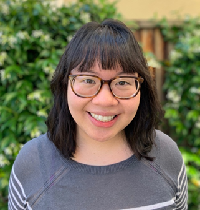
Title : Adjustment of Regional Cortical Thickness Measures for Global Cortical Thickness Obscures Deficits Across the Schizophrenia Spectrum: A Cautionary Note about Normative Modeling of Brain Imaging Data
Name : Jessica P. Y. Hua
University : University of California San Francisco
Country : USA
Download AbstractAbstract:
Introduction: Whether to adjust for variance associated with global brain metrics is a perennial question in brain morphometry studies. Recent neuroimaging studies in psychiatric disorders, including schizophrenia and bipolar disorder, as well as the clinical high-risk for psychosis (CHR-P) syndrome, have advocated that analyses of regional thickness covary for global thickness, to support conclusions about disease-related regional specificity. Moreover, recent efforts to disseminate analytic tools to conduct age- and gender-normative modeling have incorporated global brain covariation when deriving normatively-adjusted regional measurements. These analytic approaches have been applied to large datasets, yielding seemingly definitive estimates of disease effects on regional morphometry. The current study challenges this approach on conceptual and statistical grounds, formally demonstrating that this statistical approach severely underestimates regional thickness dysmorphology in psychiatric disorders. We examined regional thickness profiles from two archival magnetic resonance imaging (MRI) studies and hypothesized that: 1) covarying for global thickness will attenuate or eliminate patient group regional thickness abnormalities, 2) especially when there are patient group abnormalities in global thickness and when global and regional thickness are highly correlated, and 3) adjustment for ICV would not have the same detrimental effect. Methods: Study 1 included 90 healthy control (HC), 51 CHR-P (10 individuals converted to a psychotic disorder, 23 were followed clinically for ≥24 months without converting), and 78 early illness schizophrenia (ESZ) participants from the University of California San Francisco. Study 2 included 56 HC, 83 non-affective psychosis (NAff-P), and 30 affective psychosis (Aff-P) participants from the Human Connectome Project-Early Psychosis (HCP-EP). We examined global and regional thickness correlations, global thickness group differences, and regional thickness group differences with/without global thickness covariation. Results: Global and regional thickness were strongly correlated across groups. Global thickness was lower in schizophrenia-spectrum groups versus other groups. Regional widespread thickness deficits in schizophrenia-spectrum groups were attenuated/eliminated with global thickness covariation. Global thickness adjustment so distorted profiles of schizophrenia-spectrum groups that, paradoxically, adjusted scores for some brain regions were rendered abnormally increased. Further, there was a trend for CHR-P converters to have decreased global thickness versus non-converters, with complete attenuation of regional differences with global thickness covariation. In contrast, CHR-P and Aff-P did not differ from HC in global thickness, and profiles remained similar with global thickness adjustment. This distortion was further demonstrated in permutation analyses in which global thickness was randomly shuffled within groups to attenuate the typical regional-global thickness correlation. This simulation showed that distortion of true group differences only arises when global and regional thickness are highly correlated, which in nature, is most of the time. Discussion: Depriving regional thickness of the variance it shares with global thickness removes disease-related effects and leads to erroneous conclusions, particularly when widespread cortical deficits are characteristic of the disease. These analytical decisions are important to clarify because conclusions drawn from these studies inform our understanding of disease pathophysiology and identification of prognostic biomarkers. We advocate that future studies examining regional thickness in psychiatric disorders abandon statistical global thickness adjustment and that publicly-disseminated tools include the option to omit global thickness adjustment.
Biography:
Dr. Jessica Hua is an Assistant Adjunct Professor at the University of California San Francisco and a Staff Clinical Psychologist at the San Francisco VA Health Care System. Drawing from research in basic science and clinical psychopathology, Dr. Hua’s program of research aims to elucidate the pathophysiological mechanisms of schizophrenia and their contributions to the development and maintenance of psychosis. She specializes in using neuroimaging, behavioral, and physiological techniques to probe neural and behavioral processes across the illness course, from individuals at clinical high-risk for developing psychosis to those with chronic presentations. Her long-term goals are to develop a multimodal program of clinical neuroscience research that 1) improves psychosis risk prediction and 2) contributes to the advancement of mechanistically-informed interventions for individuals with psychosis and other serious mental illnesses. Her current grants are focused on 1) examining how social and behavioral determinants of heath impact the brain and influence risk of conversion to psychosis and 2) using noninvasive brain stimulation to test neuroplasticity mechanisms involved in schizophrenia.

Title : Epigenetic Insights into Alzheimer's Disease: The Critical Role of DNA Methylation
Name : Anya Shekhar
University : Kings College London
Country : UK
Download AbstractAbstract:
Alzheimer’s Disease (AD), the most common cause of dementia, is a progressive neurodegenerative disorder characterised by memory loss, cognitive impairment, and behavioural changes. Despite extensive research, the precise aetiology of AD remains elusive. However, emerging evidence increasingly points to the significance of epigenetic mechanisms, particularly DNA methylation, in its pathogenesis. DNA methylation involves the addition of methyl groups to cytosine residues, typically within CpG islands, regulating gene expression without altering the underlying DNA sequence. This review aims to explore the complex and sometimes contradictory role of gene-specific DNA methylation in the development of AD. Through a critical analysis of current literature, the review examines how hypermethylation of neuroprotective genes, such as Brain-Derived Neurotrophic Factor (BDNF) and Dual Specificity Phosphatase 22 (DUSP22), can lead to their transcriptional silencing, contributing to key AD pathologies including tau hyperphosphorylation, synaptic dysfunction, and neuronal loss. Methods involve synthesising findings from recent epigenome-wide association studies (EWAS), post-mortem brain analyses, and in vitro/in vivo models investigating the epigenetic landscape of AD. Results indicate a trend toward increased methylation at regulatory sites of neuroprotective genes in AD-affected brain regions. However, findings are not uniform across studies, and some research challenges a direct causal relationship between DNA methylation changes and AD pathology, highlighting confounding factors such as aging, lifestyle, and genetic variability. These discrepancies underscore the need for more precise, large-scale longitudinal studies. The review also evaluates potential therapeutic avenues, including DNA methyltransferase inhibitors, which may reverse aberrant methylation patterns and restore gene function. Nonetheless, significant challenges remain, particularly regarding the specificity, safety, and effective delivery of these agents to the brain. Future directions involve integrating precision epigenetic profiling with multi-targeted treatment strategies that address the heterogeneous and multifactorial nature of AD. In conclusion, while DNA methylation represents a promising area of investigation, a more holistic understanding of the interplay between genetic, epigenetic, and environmental factors is essential for developing effective interventions that may delay onset, slow progression, or potentially prevent AD, ultimately improving patient care and outcomes.
Biography:
Anya Shekhar is a third-year medical student at Kings College London, with a First Class Honours undergraduate degree in Neuroscience and a strong passion for neurology. Alongside her academic training, she has gained extensive experience in healthcare, particularly in caring for elderly residents, many of whom live with dementia. These experiences have deepened her understanding of the human impact of neurodegenerative diseases and strengthened her commitment to improving patient outcomes through both clinical care and research. Throughout medical school, Anya has actively engaged in research and clinical work focused on neurological disorders such as Alzheimer’s disease, with a particular interest in the role of neuro-epigenetics in shaping future therapeutic strategies. Her long-term goal is to pursue a career in neurology, integrating her scientific background with compassionate, patient-centered care. She aspires to contribute to advancements in neurotherapeutics and brain health through both clinical practice and translational research.

Title : The Clinical Significance of the Trigeminal-Cervical-Complex (TCC): A neural network explaining prevalent constellation of disorders affecting not only the Head & Neck
Name : Fady Bou Malhab
University : St. Joseph University Hospital
Country : Lebanon
Download AbstractAbstract:
Objectives: To introduce the trigeminal cervical complex (TCC) as a comprehensive framework for understanding the anatomical and functional scope of the afferences and efferences of the trigeminal system and explaining common otolaryngologic symptoms, including head and neck myofascial pain syndrome. Additionally, it explores how the bidirectional transmission of neurotransmitters contributes to the sensitization of the TCC and motor nuclei. Methods: The study was conducted as a narrative review. The authors performed a comprehensive search of multiple databases, including Medline/OVID, Embase, Scopus, and PubMed, covering publications from inception until August 2023. Results: This review discusses the multiple afferent connections from cranial nerves, specifically VII, IX, X, and XI, to the TCC, and their respective efferent pathways. These connections may explain various clinical manifestations in the head and neck that cannot be attributed to other medical conditions. Additionally, the review highlights: 1- the dual sensory and motor nature of cranial nerves, 2- the bidirectional transmission of neurotransmitters in head and neck areas, which leads to the sensitization of both the TCC and motor nuclei innervating the cervicofacial muscles, 3- How sensitization of the TCC by cervicofacial muscles could affect the sensorineural organs (Ear, Eye, Nose) and other organs. Conclusion: The central and peripheral sensitization and the intricate connections of the TCC can elucidate the pathophysiology of conditions such as otalgia, tinnitus, hearing loss, vertigo, headache, cervicogenic dizziness, bruxism, and other symptoms affecting the head and neck.
Biography:
Dr. Fady Bou Malhab is currently the Medical Director of Consilia Medicare Group, Beirut-Lebanon and consultant at the Otorhinolaryngology – Head & Neck Surgery department St. Joseph university Hospital, Beirut-Lebanon. He received his degree of Medicine at St. Joseph University- Beirut in 1993 and of Otorhinolaryngology-Head & Neck Surgery at Paris VII University in 1999. Dr Fady is an active Member of Lebanese Society of Otorhinolaryngology-Head & Neck Surgery. He completed his training on botulinum toxin injections in the head and neck at the Rothschild Foundation in Paris. Dr Fady is practicing in Lebanon since 2000 focusing on Head & Neck Myofascial Pain Syndrome. He has many publications in French and Northern American Journals and organized many local Meetings and attended many International Meetings.

Title : Updates in the Diagnosis and Management of Cerebrotendinous Xanthomatosis (CTX) – A "Modifiable and Treatable" Metabolic and Genetic Disorder Presenting
Name : Yaz Y. Kisanuki
University : The Ohio State University Wexner Medical Center
Country : USA
Download AbstractAbstract:
Cerebrotendinous xanthomatosis (CTX) is a rare autosomal recessive genetic and metabolic disorder caused by a deficiency in the enzyme sterol 27-hydroxylase, which results from biallelic pathogenic variants in the CYP27A1 gene. This enzyme plays a critical role in the synthesis of bile acids. Its deficiency leads to the accumulation of toxic metabolites, affecting several organs, including the gastrointestinal systems (e.g. refractory diarrhea), eyes (cataracts), tendons (xanthomas), bones (osteoporosis), and the nervous systems. Among these, neurological symptoms impacting both the central and peripheral nervous systems (CNS/PNS) are the most debilitating. Common CNS manifestations include cerebellar degeneration/ataxia, leukoencephalopathy, and myelopathy, while PNS involvement presents as neuropathy. Once patients develop neurological symptoms, these can become irreversible and degenerative over time, even with treatment. Some patients may experience reduced life expectancy due to complications related to dementia from leukoencephalopathy and/or cerebellar ataxia. Therefore, early diagnosis and treatment, ideally during the “pre-neurologic” phase, are crucial for patients with CTX. Until recently, CTX patients have been treated with “off-label” use of either chenodeoxycholic acid (CDCA) or cholic acid, based on anecdotal evidence of their benefits. To seek FDA approval for CDCA, a phase 3 multi-center randomized clinical trial (RCT) was recently completed. In my presentation, I will focus on the 3 following points: A) both typical and atypical clinical presentations of CTX; B) highlights of a recent RCT of CDCA for CTX, which resulted in the FDA’s approval of CDCA; and C) the practical use of biochemical analyses to optimize patient care.
Biography:
Dr. Kisanuki obtained his MD from the University of Tokyo. After his research training at the University of Texas Southwestern Medical Center in Dallas, he completed his neurology residency at the University of Michigan. He joined The Ohio State University Wexner Medical Center (OSUWMC) in Columbus, Ohio, as an Assistant Professor. He currently is a Clinical Associate Professor in the Department of Neurology at OSUWMC. He is recognized as a Fellow of both the American Academy of Neurology (FAAN) and the American Neurological Association (FANA). His research interests are centered on developing therapies for genetic cerebellar ataxias, PLS, and other genetic disorders such as HSP. He has significantly contributed to characterizing the rodent model of SPG6-hereditary spastic paraplegia (HSP), as well as conducting clinical research on primary lateral sclerosis (PLS) and other rare genetic disorders. Recently, he played a pivotal role in a multi-center Phase 3 clinical trial that led to the FDA approval of chenodeoxycholic acid for the treatment of cerebrotendinous xanthomatosis. Dr. Kisanuki organizes several specialized clinics, including: a multidisciplinary cerebellar symptom management clinic, a neurogenetic disorders clinic, and a spasticity clinic utilizing intrathecal baclofen pumps. He also serves as the residency program director for adult neurology residents.

Title : Managing Lifestyle Management: Diet, Exercise, and Other Nonpharmacologic Interventions
Name : Robert S. Smith
University : A.T. Still University
Country : USA
Download AbstractAbstract:
Nonpharmacologic treatment of coronary heart disease has an essential role in the successful treatment of cardiovascular disease (CVD). Despite our technological advances, heart disease continues to be the leading cause of death not only in the United States but also across the westernized world. Many organizations have spoken about the need for lifestyle modifications and dietary changes as an important method to prevent and treat CVD. This presentation reviews current evidence related to the nonpharmacologic treatment of CVD, the benefits of physical activity (PA) and the adverse effects of sedentary behavior, the pathophysiology associated with physical and dietary habits. The overall health benefits of simple nonpharmacologic treatments include exercise, diet, nutrition, stress management, contemporary technology, barriers and social determinants of health, and recommended strategies for implementation of this treatment modality.
Biography:
Dr. Robert Smith, DHSc, PA-C, is employed by Pediatric Associates Family of Companies (PAFC / MDMG) in Family Medicine (FM) as the Regional Lead Clinician (RLC) for Family Medicine and consults patients at Clinicas Mi Doctor in Irving TX. He is a veteran of the U.S. Coast Guard. Graduated from PA School at the University of California, Davis FNP/PA program. Master of Science (MS), at Arizona School of Health Sciences, Doctor of Health Science (DHSc), and a Graduate Certificate in Education (Ed), A.T. Still University, College of Graduate Health Studies. Dr. Smith actively serves in professional organizations, He has completed original research, which includes validating the PHQ-9 in Spanish, published in Journal of National Hispanic Medical Association (JNHMA) and has authored and published other papers, on topics such as the use of AI Scribes, Diabetes, Hypertension, and most recently on Managing Lifestyle Management: Diet, Exercise, and other Nonpharmacologic Interventions. Dr. Smith actively teaches and precepts students in clinic.

Title : The need for an Interdisciplinary Team to Address the Issue of Sialorrhea in Children with Cerebral Palsy
Name : Krasavina Diana Alexandrovna
University : Saint Petersburg State Pediatric Medical University
Country : Russia
Download AbstractAbstract:
Introduction. The issue of sialorrhea today has not only a social dimension but also a serious clinical aspect. The significant functional changes in a child (such as the absence of walking and reduced cognitive and speech defects) often overshadow sialorrhea. In reality, it is a severe deficit that includes anterior sialorrhea—saliva leakage from the oral cavity—which leads to skin maceration, the onset of skin infections, as well as more serious posterior sialorrhea that can cause complications such as aspiration pneumonia and bronchitis. At the current stage of medical development, the correct involvement of an interdisciplinary team for such patients reduces disease risks by decreasing saliva secretion through botulinum therapy. Objective of the study. To assess the effectiveness of reducing sialorrhea in children with cerebral palsy (CP) using injections of botulinum toxin into the parotid and submandibular glands, followed by activation of oromandibular muscles through individualized exercises and physical therapy under ultrasound navigation, utilizing international tests. Materials and methods. In a group of patients (8 boys, 7 girls) aged 2 to 12 years with CP GMFCS III-V and sialorrhea, testing was conducted to determine the degree of sialorrhea. Measurements included assessing unstimulated salivary flow rate (uSFR) and counting drool bibs before and after botulinum therapy. The third scale used was the DIS scale. Doses for botulinum therapy were registered based on specific weight and age, administered under ultrasound navigation to the submandibular and parotid glands at doses ranging from 6 to 22 units. Three weeks later, control dynamics were assessed across all scales, and exercises were selected to improve swallowing reflexes in children. A self-instruction manual with exercises for the oromandibular system was utilized. Results. All children showed positive results following the injection of neurotoxin (Xeomin), marked by a reduction in saliva secretion reported by parents and confirmed by international scales for involuntary salivation. In 6 out of 8 boys and 7 out of 7 girls, individualized physical therapy sessions and work with a speech therapist improved swallowing reflexes and control over the oral cavity and lips. Conclusions. The use of botulinum toxin type A for sialorrhea in children with CP is an important method for treatment and rehabilitation. It is necessary to develop standardized questionnaires for parents prior to examination by an interdisciplinary team aimed at treating such children.
Biography:
Diana Alexandrovna Krasavina is a professor at the Federal State Budgetary Educational Institution of Higher Education Saint Petersburg State Pediatric Medical University of the Ministry of Health of the Russian Federation. She graduated from the Pediatric University in 1990, after which she studied at the University of Chiropractic Medicine in Prague and mastered chiropractic therapy methods at the Shaolin Monastery. In 1997, she defended her candidate dissertation on the topic “Vertebrogenic Dependent Cardiac Rhythm Disorders.” In 2013, she defended her doctoral dissertation on “Innovative Methods for Treating Pain Syndromes in Patients with Dorsalgias Using Botulinum Toxin and Individualized Physical Therapy Complexes.” For over 20 years, she has been treating sialorrhea, pain syndromes, and spasticity in children with traumatic brain injuries and cerebral palsy. She possesses expert knowledge in the fields of traumatology, orthopedics, botulinum therapy, and rehabilitation. She has published more than 300 works on the rehabilitation of vertebrological patients and the treatment of children with cerebral palsy using botulinum therapy and other rehabilitation methods. She holds 2 patents for inventions. She was the first in Russia to register a method for alleviating the spastic-dystonic form of Wilson-Konovalov disease. Her areas of scientific interest include alleviating pain syndromes using botulinum toxin, correcting facial nerve neuritis in children, and botulinum therapy for cerebral palsy.

Title : The Long-Term Effects of Gold Nanoparticles as Gene Vectors in a 6 Hydroxydopamine-Induced Parkinsonian Rat Model
Name : Zama N.P. Msibi
University : University of KwaZulu-Natal
Country : South Africa
Download AbstractAbstract
Nanotechnology is a growing field that has widely documented the surface binding capabilities of gold nanoparticles (AuNPs). This makes them potentially useful gene vectors for the transfer of defective enzymes in Parkinson’s disease (PD), a neurodegenerative disorder resulting in neuroinflammation and neuronal cell destruction. We investigated the long-term effects of AuNPs in the striatum of a 6-hydroxydopamine (6-OHDA)-induced parkinsonian rat model. AuNP-conjugated transgene constructs (AuNP-DNA) of human aromatic acid decarboxylase (AADC) mixed with GTP cyclohydrolase 1 (GCH1) (1:1) was stereotaxically delivered to the striatum of either saline or 6-ODHA-lesioned Sprague Dawley rats. Long-term effects of AuNP-mediated gene therapy was evaluated on behavior, pro-inflammatory cytokine IL-1β expression, morphology of striatal microglia, dopamine biosynthesis and transgene expression. The 6-OHDA-induced neurobehavioral deficits were mitigated in gene therapy groups. This finding was correlated with significantly improved dopamine biosynthesis, inhibition of long-term expression of IL-1β, and suppression of sustained microglial activation. Both human AADC and GCH1 transgenes were differentially expressed in the groups that underwent gene therapy. This suggests a successful AuNP-mediated transgene expression in the striatum, allowing for effective uptake and transcription of AADC and GCH1 for DA re-synthesis. Furthermore, an IL-1β- and microglial-mediated inflammatory response was attenuated, preventing or suppressing neuroinflammation that is implicated in PD pathology. Further studies detailing the mechanism of cellular uptake and transgene expression may be useful in determining the success of AuNPs as gene vectors in PD treatment.
Biography:
Dr Zama Msibi is an early career researcher and Lecturer in the School of Laboratory Medicine and Medical Science at the University of KwaZulu-Natal (UKZN). She has supervised and graduated more than 10 post-graduate students in the field of Neuroscience. Her research focus includes: Parkinson’s disease – Pathology and Treatment, Nanotechnology, Molecular Biology, Gene Therapy, Cerebrovascular dysfunction, Neurocysticercosis, Hydrocephalus and Psychosis – where she collaborates with a team of Psychiatrists, Neurosurgeon and Basic sciences researchers. Dr Msibi is passionate about bridging the gap between basic science research and clinical research and is involved in multiple clinical research projects and activities. Dr Msibi also serves a Secretary General in the executive committee for the Sothern African Neuroscience Society.

Title : Screening of Pediatric Obstructive Sleep Apnea using Video Monitoring
Name : Konomi Ikeda
University : St. Marianna University Hospital
Country : Japan
Download AbstractAbstract:
Introduction: According to International classification of sleep disorder (ICSD-3), overnight polysomnography (PSG) is the gold standard examination for the diagnosis of pediatric obstructive sleep apnea (OSA). However, most of the patients in Japan are not able to access the specialized sleep medical facilities for PSG due to less availability and cost issues. Purpose of this study is to examine whether combination of video monitoring items and other clinical examinations can reliably predict the severity of pediatric OSA compared with PSG. Methods: The study subjects were children diagnosed with sleep related breathing disorder (SRBD) who attended the Department of Otorhinolaryngology at Ota General Hospital between 2012 to 2019. A total of 175 cases were included in this individual retrospective-cohort study, consisting of 122 boys and 53 girls, with ages from 3 to 12 years (median: 8.00). Clinical data included the children’s medical history, physical examinations, imaging cephalograms, rhinomanometry, and PSG with video monitoring performed by sleep technicians for all patients. Multiple linear regression analyses were performed to identify independent predictors significantly related to the severity of OSA (AHI: apnea hypopnea index, 5/h and 10/h). Results: For AHI greater than 5/h, the independent predictors were nocturnal oximetry(PSG-ODI 3%>3/h), total nasal resistance, tonsil size, one video monitoring item, and the total video monitoring score. The accuracy of this predictive statistic model was 88.0% (sensitivity 78.3%, specificity 93.0%). For AHI greater than 10/h, the independent predictors included facial axis of cephalogram, nocturnal oximetry (PSG-ODI 3%>5/h),, and BMI <15, along with video monitoring parameters such as whole-night inspiratory noise (loud) and chest retraction. The sensitivity of this model was 88.7%, specificity was 84.1%, and accuracy was 86.9%, which is much higher than the accuracy of the model without video monitoring score. Conclusions: Instead of relying solely on PSG, the combination of video monitoring score and multiple clinical examinations could provide a reliable diagnostic approach for pediatric OSA. These results will support the establishment of more efficient diagnostic strategies for both patients and physicians.
Biography:
Konomi Ikeda is a Chief of the otorhinolaryngology department at Atsugi city hospital in Kanagawa, Japan. With expertise in Sleep medicine, she had contributed significantly to organize the 48th annual meeting of Japanese society of sleep research. Her research interests include sleep disorders and developmental disorders.

Title : Effect of an Exercise Program on the Balance, Gait, Vibration Sense, and Cardiometabolic Parameters Among Patients with Diabetic Peripheral Neuropathy: A Randomized Controlled Trial
Name : Maryam Zahedi
University : Golestan University of Medical Sciences
Country : Iran
Download AbstractAbstract:
This study assessed the effect of an exercise program on balance measurements, vibration sense, walking speed, and cardiometabolic parameters in patients with diabetic peripheral neuropathy (DPN). The pre-and post-testing designs were used in this randomized clinical trial with 44 patients with DPN who were randomly assigned to equal control and exercise groups (n = 22). The intervention was an 8-week program comprising balance and proprioceptive exercises in 3 weekly sessions. The hemoglobin A1C (HbA1c), fasting plasma glucose (FPG), triglycerides, high-density lipoprotein cholesterol (HDL-C), low-density lipoprotein cholesterol (LDL-C), total cholesterol (TC), balance, vibration sense, and walking speed were assessed. The time up and go (TUG) test and the Berg balance scale were used to measure dynamic and static balance. After adjusting for their baseline, we applied analysis of covariance (ANCOVA) to test the comparison of all parameters between the two groups at the end of the study. We observed significantly improved vibration sense and walking speed in the exercise group compared to the control group. We also observed a significant decrease in TUG, body weight, FPG, LDL-C, TC, and triglycerides and a significant increase in HDL-C levels after 8 weeks of exercise in the intervention group compared to the control group. The results showed that the exercise program improved balance and vibration sense, walking speed, lipid profile, body weight, and FPG in patients with DPN. This exercise program seems appropriate and can be influential in managing these patients and medication.
Biography:
She is an assistant professor of Endocrinology at Golestan University of Medical Sciences (GOUMS). She is professional in the diagnosis and management of Diabetes mellitus, thyroid disorders, calcium, phosphorus, bone metabolism, and reproductive disorders, including hypogonadism, hirsutism, gynecomastia, etc. She has a 10-year history of clinical practice and research in internal medicine and endocrinology. She also trained several medical students. She has several published articles in the field of endocrinology, and she is ongoing research in these fields.

Title : The Neuroendocrine and Reproductive Functions of Asprosin in Mammalian Physiology
Name : Haluk Kelestimur
University : Istanbul Okan University
Country : Turkey
Download AbstractAbstract:
Asprosin, an adipokine released from the white adipose tissue during fasting, was first discovered in patients with neonatal progeroid syndrome. Asprosin is encoded by the fibrillin 1 (FBN1) gene, weighs approximately 30 kDa, and consists of 140 amino acids. Asprosin is an orexinergic hormone that modulates hepatic glucose release and hence has a role in metabolic processes. Recent studies suggest that asprosin may extend its influences on reproductive and sensory physiology, impacting various neuroendocrine pathways associated with sexual maturation and behavior in mammals. Studies indicate that while asprosin does not typically alter the timing of puberty onset, it is associated with the advancement of specific reproductive milestones in both sexes. In males, asprosin has been linked to enhanced sexual motivation and an accelerated ejaculation phase, while in females, it is associated with the advancement of the first estrus phase and heightened sexual exploration. Additionally, asprosin appears to improve olfactory performance in both male and female subjects, possibly through olfactory receptor-mediated pathways, suggesting a role in sensory processing that may complement its reproductive functions. Asprosin has been shown to act by binding to the OLFR734 receptor, which is an olfactory receptor. Asprosin has been shown to elevate levels of key reproductive hormones, such as corticosterone, folliclestimulating hormone (FSH), estrogen, and oxytocin, which are critical for sexual maturation and function. Furthermore, histological analyses have revealed its stimulatory effects on ovarian follicle development in females and enhanced testicular activity in males, underscoring asprosin’s potential role in promoting reproductive tissue development. Overall, asprosin emerges as a multi-functional hormone influencing both neuroendocrine and sensory pathways. Its roles in sexual behavior, olfactory performance, and hormone regulation highlight asprosin as an important contributor to mammalian reproductive and sensory physiology. These insights broaden the understanding of adipokines in endocrine signaling and suggest potential therapeutic applications for asprosin in treating reproductive and metabolic disorders. This study was supported by TUBITAK (Project # 220S744).
Biography:
Dr Haluk Kelestimur is a Professor of Physiology in Istanbul Okan University. He gained his PhD in Physiology in 1984 from the University of Firat, Turkey. He then completed his postdoctoral training at University College London in 1988. After he worked 42 years in Firat University, he began to work in Istanbul Okan University in 2022. His work focusses on neuroendocrinology. Professor Haluk Kelestimur was elected to membership in the
International Union of Physiological Sciences Academy in 2021.

Title : Decoding the Brain: How Oscillations Enable Flexible Switching Between Spatial and Temporal Information Processing
Name : Hubert Loffler
University :
Country : Austria
Download AbstractAbstract:
In this presentation. I examine the relationship between space and time in neuronal information processing. Neurons communicate via electrical impulses (spikes), and the spatial and temporal patterns of these spikes are essential for brain function. I will discuss how brain oscillations can convert temporal spike patterns into spatial ones and vice versa, allowing the brain to switch flexibly between spatial and temporal coding depending on the situation. Previous models, such as “Tempotron” and “ReSuMe,” could recognize spike patterns or generate precise outputs but were unable to directly store these patterns. Together with Gupta and Bahmer, I developed a model that links the timing of spikes to the spatial structure of a neuron’s dendritic tree or to ensembles of neurons using oscillations, enabling the single neuron or the ensemble of neurons to remember and reproduce precise temporal patterns. Research shows that different types of sensory information are coded differently: auditory and tactile stimuli often rely on spatial coding, while sensory intensity is typically encoded temporally. Brain oscillations are key to enabling the transformation between these coding forms. We demonstrate how a spatial input can be converted into a temporal spike train, stored, transmitted to distant locations, and recalled through spike bursts similar to Sharp Wave Ripples. This temporal representation can also be transformed back into a spatiotemporal pattern. Using a simple feed-forward spiking neural network, we illustrate the principles of this transformation, where the frequencies and phases of Subthreshold Membrane Oscillations play a critical role. The model provides insights into multiplexing information and phenomena like stretching or compressing the time of spike patterns. Temporal coding could also be crucial for processes like pattern separation, where even very similar spatial patterns trigger distinct temporal responses in a neuron. In summary, I highlight how the brain enhances information processing by flexibly utilizing both spatial and temporal coding, with oscillations being fundamental in mediating these transitions.
Biography:
Hubert Löffler is a private researcher in Austria, working on neural coding based on spiking neural networks.

Title : The Utility of Therapeutic Hypothermia on Cerebral Autoregulation
Name : Haiyan Liu
University : University of Science and Technology of China
Country : China
Download AbstractAbstract:
Cerebral autoregulation (CA) dysfunction is a strong predictor of clinical outcome in patients with acute brain injury (ABI). CA dysfunction is a potential pathologic defect that may lead to secondary injury and worse functional outcomes. Early therapeutic hypothermia (TH) in patients with ABI is controversial. Many factors, including patient selection, timing, treatment depth, duration, and rewarming strategy, impact its clinical efficacy. Therefore, optimizing the benefit of TH is an important issue. This paper reviews the state of current research on the impact of TH on CA function, which may provide the basis and direction for CA-oriented target temperature management (TTM).
Biography:
Haiyan Liu is an associate chief physician & clinical nutritionist at Neurocritical Care Unit of The First Affiliated Hospital of USTC, Anhui, China. With expertise in acute brain injury, she has contributed significantly to study on cerebral autoregulation in acute brain injury.

Title : To Treat or Not to Treat: The Ethics of Management of Refractory Status Myoclonus Following Pediatric Anoxic Brain Injury
Name : Alyson Baker
University : University of Nebraska College of Medicine
Country : USA
Download AbstractAbstract:
The development of status myoclonus (SM) in a post-cardiac arrest patient has historically been thought of as indicative of not only a poor neurologic outcome but of neurologic devastation. In many instances, this may lead clinicians to initiate conversations about withdrawal of life sustaining therapies (WLST) regardless of the time from return of spontaneous circulation (ROSC). Recent studies showing a percentage of patients may make a good recovery has called into question whether a self-fulfilling prophecy has developed where the concern for a poor neurologic outcome leads clinicians to prematurely discuss WLST. The issue is only further complicated by changing terminology, lack of neuro-axis localization, and limited data regarding association with electroencephalogram (EEG) characteristics, all of which could aid in the understanding of the severity of neurologic injury associated with SM. Here we review the initial literature reporting SM as indicative of poor neurologic outcome, the studies that call this into question, the various definitions of SM and related terms as well as data regarding association with EEG backgrounds. We propose that improved prognostication on outcomes results from combining the presence of SM with other clinical variables (eg. EEG patterns, MRI findings, clinical exam). We discuss the ethical implications of using SM as a prognostic tool and its impact on decisions about life-sustaining care in children following cardiac arrest. We advocate for prognostication efforts to be delayed for at least 72 hours following ROSC and thus to treat SM in those early hours and days.
Biography:
Dr. Alyson Baker received her medical degree from Saint Louis University School of Medicine in St Louis, Missouri. She completed her pediatric residency at Connecticut Children’s Medical Center at University of Connecticut, pediatric critical care fellowship at Riley Hospital for Children at Indiana University and pediatric neurocritical care fellowship at St Louis Children’s Hospital at Washington University in St Louis MO. She is an assistant professor of Pediatrics in Pediatric Critical Care at UNMC College of Medicine. Dr. Baker’s clinical interests include treating all critically ill children, but has a passion for those with neurocritical conditions including such conditions as status epilepticus, stroke and traumatic brain injury.
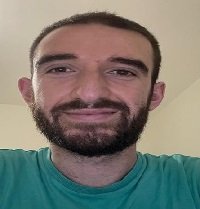
Title : Sphingomyelin Regulates Nuclear Activity in Embryonic Hippocampal Cells
Name : Federico Fiorani
University : University of Perugia
Country : Italy
Download AbstractAbstract:
Nuclear sphingomyelin is located in nuclear membrane, nuclear matrix, nucleolus and active chromatin. In inner nuclear membrane, sphingomyelin links cholesterol to form nuclear lipid microdomains also called nuclear lipid raft. Nuclear lipid microdomains act as platform for nuclear receptor as glucocorticoid receptors and vitamin D receptor. Moreover, these structures play a role as anchoring for active chromatin by regulating DNA duplication and RNA transcription. Of note, nuclear lipid microdomains are associated with a double strands and/or circular RNAs, unsensitive to RNase treatment. The aim of the work was to investigate the composition of RNA associated with nuclear lipid microdomains and to demonstrate the protective role of sphingomyelin-cholesterol complex on double strands/circular RNA in embryonic hippocampal cell (HN9.10e cell line). The results showed that the RNA present in the nuclear lipid microdomains was the 20% of the total RNA in nucleus and this RNA was resistant to RNase treatment performed during the microdomain extraction. By incubating the cells with increasing concentration of sphingomyelin- cholesterol, RNAse-resistant RNA increased. The opposite result was obtained treating the cells with neutral sphingomyelinase, able to degrade sphingomyelin producing ceramide and phosphocholine. In order to understand which types of RNA were protect by sphingomyelin, we isolated total RNA from nuclear lipid microdomains and we found different species of RNA like protein coding RNA, miRNA, miscRNA, retained intron, snRNA, lincRNA, nonsense-mediated decay RNA and small nucleolar RNA. We focused only on miRNA and mRNA because they were more abundant in nuclear lipid microdomains than whole nuclei. Regarding miRNA, 22 were expressed in different statistically significant manner compared to the nucleus, 8 showing higher expression and 14 showing lower expression. All overexpressed miRNAs were correlated with neuro-psychological diseases as chronic epilepsy, amyotrophic lateral sclerosis and psychological disorders. About mRNA, 20 mRNAs were differentially concentrated in nuclear lipid microdomains respect to nuclei, all involved in chromatin remodeling and in the development of nervous system. To justify the high amount of miRNA in nuclear lipid microdomains, we investigated the possible presence of EIciRNA known to act as sponges for miRNA. The results showed the presence of 18 significant EIciRNAs. In conclusion, this study indicates a new role for sphingomyelin-cholesterol complex in nuclear lipid microdomains of embryonic hippocampal cells. The data demonstrate that sphingomyelin can regulate nuclear activity by protecting and maintaining the double-strand and/or circular structure of different RNA types involved in chromatin organization and brain pathophysiology.
Biography:
Federico Fiorani is a PhD Student in biochemistry and molecular biology laboratory, headed by Prof. Albi Elisabetta at Department of Pharmaceutical Sciences of University of Perugia, Perugia, Italy. With expertise in sphingolipid metabolism, nuclear lipids, extracellular communication and role of Vitamin D both in physiological and pathological conditions. Its research interests include the metabolism of sphingolipids and their role in regulating nuclear activity. In addition, he studies the sphingolipids’ ability to control the extracellular communication, in particular to influence release, incorporation and biogenesis of extracellular vesicles with focus on exosomes in embryonic hippocampal cells and neurodegenerative model. Moreover, he studies the functions, metabolism and single nucleotide polymorphism of Vitamin D and its receptor, in correlation with sphingolipids, in mental health and breast cancer.

Title : Role of Machine Learning Algorithms in Suicide Risk Prediction: A Systematic Review-Meta Analysis of Clinical Studies
Name : Houriyeh Ehtemam
University : Anglia Ruskin University
Country : UK
Download AbstractAbstract:
Suicide is a complex and multifactorial public health problem. Understanding and addressing the various factors associated with suicide is crucial for prevention and intervention efforts. Machine learning (ML) could enhance the prediction of suicide attempts. A systematic review was performed using PubMed, Scopus, Web of Science and SID databases. We aim to evaluate the performance of ML algorithms and summarize their effects, gather relevant and reliable information to synthesize existing evidence, identify knowledge gaps, and provide a comprehensive list of the suicide risk factors using mixed method approach. Forty-one studies published between 2011 and 2022, which matched inclusion criteria, were chosen as suitable. We included studies aimed at predicting the suicide risk by machine learning algorithms except natural language processing (NLP) and image processing. The neural network (NN) algorithm exhibited the lowest accuracy at 0.70, whereas the random forest demonstrated the highest accuracy, reaching 0.94. The study assessed the COX and random forest models and observed a minimum area under the curve (AUC) value of 0.54. In contrast, the XGBoost classifier yielded the highest AUC value, reaching 0.97. These specific AUC values emphasize the algorithm-specific performance in capturing the trade-off between sensitivity and specificity for suicide risk prediction. Furthermore, our investigation identified several common suicide risk factors, including age, gender, substance abuse, depression, anxiety, alcohol consumption, marital status, income, education, and occupation. This comprehensive analysis contributes valuable insights into the multifaceted nature of suicide risk, providing a foundation for targeted preventive strategies and intervention efforts. The effectiveness of ML algorithms and their application in predicting suicide risk has been controversial. There is a need for more studies on these algorithms in clinical settings, and the related ethical concerns require further clarification.
Biography:
Houriyeh Ehtemam is a Ph.D. student in Robotics at Anglia Ruskin University. Her research journey began in 2017, focusing on data mining methods for breast cancer prediction. During her master’s studies, she delved into suicide prediction using machine learning algorithms, which sparked her interest in the intersection of suicide prevention and machine learning. In 2024, she immigrated to the United Kingdom to further her education in the fields of Robotics and medical wearable devices. Simultaneously, she continues her work on suicide prevention. Houriyeh seizes every opportunity for learning and growth.

Title : MicroRNA and Metabolic Arrest
Name : Kenneth B. Storey
University : Carleton University
Country : Canada
Download AbstractAbstract:
Unlike the brains of humans, animal brains are subject to extremes of environment – and must keep neural function intact during and after extreme conditions. Frogs and turtles totally freeze in winter, displaying no measurable brain activity and a flat-lined heart. Hibernating ground squirrels have brains that survive weeks at 0oC. Mole rats survive deep hypoxia/anoxia and maintain CNS function . These states are termed “suspended animation” and are characterized by global suppression of metabolic functions and the reprioritization of energy usage to essential survival processes . This extreme reorganization is elicited, in large part, by the regulatory controls of microRNAs. Our studies are the first to investigate miRNA biogenesis and regulation in extreme brains of vertebrates. The studies are informed by the creation and analyses of miRNA “OMES” – complete RNA-seq studies that have uncovered both up and down regulation of key microRNAs. These studies, coupled with quantitation of miRNA biogenesis factors, illustrated an overall reduction in the majority of these processing proteins – showing a potential suppression of miRNA maturation . Bioinformatic target enrichment of the up-and-downregulated miRNAs of each extreme brain predicted their involvement in the potential activation of various neuroprotective processes such as synaptic signaling, intracellular signal transduction, and anoxia/ischemia injury protection. The predominantly downregulated microRNA fingerprints identified in Nature, suggests a microRNA-mediated cytoprotective mechanism responsible for maintaining neuronal functions and facilitating successful whole brain metabolic rate depression [ MRD].
Biography:
Ken Storey, PhD, FRSC, is a Professor of Biochemistry at Carleton University in Ottawa and holds the Canada Research Chair in Molecular Physiology. He graduated from University of Calgary (BSc 1971) and University of British Columbia (PhD 1974). Ken’s field of interest is biochemical adaptation; in particular, mammalian hibernation and freeze tolerance are core topics in his over 1000 refereed publications. Ken won the 2010 Flavelle medal from the Royal Society of Canada , “CryoFellow” of the CryoBiology Society in 2012 and the 2011 Fry medal from the Canadian Society of Zoologists.
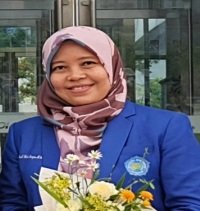
Title : Neurological manifestations of COVID-19 in Indonesia
Name : Andi Weri Sompa
University : Muhammadiyah University of Makassar
Country : Indonesia
Download AbstractAbstract:
Coronavirus disease 2019 (COVID-19), caused by the severe acute respiratory syndrome coronavirus 2 (SARS-CoV-2), can manifest in multiple organs. While the primary manifestations of COVID-19 occur in the respiratory system, other organ systems are also involved, including nervous systems that cause neurological symptoms. This study aimed to determine the neurological manifestations of COVID-19 patients and to assess the role of age and sex on neurological manifestation incidence. A cross-sectional study was conducted at Pelamonia Hospital, Makassar, Indonesia, among inpatient COVID-19 cases, using a purposive sampling method. Demographic data and neurological manifestations of the COVID-19 patients were collected. The associations between age and sex with the incidence of neurological symptoms were analyzed using the Chi-squared test. Out of 424 inpatients with COVID-19 cases, 62.3% were females, with the highest age group being 20–40 years (42.7%). The neurological symptoms were reported in 232 patients, accounting for approximately 54.7%. The most frequently reported neurological symptom was headache (n=104, 44.8%), followed by anosmia (n=44, 18.9%), ageusia (n=48, 20.6%), myopathy (n=14, 6%), stroke (n=10, 4.3%), seizure (n=5, 2.1%), and altered consciousness (n=7, 3%). An association was found between sex and the incidence of headache (p-value 0,013), myopathy (p-value 0,001), stroke (p-value 0,032), and altered consciousness (p-value 0,014). There was also an association between age and the incidence of headaches (p-value 0,004) and stroke (p-value 0,006). The study highlights that COVID-19 patients commonly exhibit neurological implications affecting the central nervous system and peripheral nervous system. Therefore, the early detection of neurological symptoms in COVID-19 cases must have better management.
Biograpgy:
Dr. Andi Weri Sompa is a Neurology Specialist. She completed her medical studies and Neurology Specialist at the Faculty of Medicine, Hasanuddin University. In addition to her academic achievements, she is registered as a member of the Indonesian Doctors Association (IDI) and the Association of Indonesian Neurologists (PERDOSNI). Currently, Dr. Sompa holds the position as lecturer at the Faculty of Medicine and Health Sciences, Universitas Muhammadiyah Makassar. Furthermore, she currently serves as the Deputy Dean for Academic Affairs at the same faculty. Her professional practice extends to several medical institutions including PKU Muhammadiyah Unismuh Makassar Hospital, Pelamonia Hospital Makassar, and Mitra Husada Hospital Makassar.

Title : Elevation of NAD+ by Nicotinamide Riboside Spares Spinal Cord Tissue from Injury and Promotes locomotor Recovery
Name : Brett Langley
University : University of Waikato
Country : New Zealand
Download AbstractAbstract:
Spinal cord injury induces tissue damage that spreads to neighboring spared cells in the hours, days and weeks following injury. Among the biochemical changes occurring in the cells surrounding the injury is the rapid diminution of cellular nicotinamide adenine dinucleotide (NAD+), an essential coenzyme for energy metabolism and an essential cofactor for non-redox NAD+-dependent enzymes with critical functions in sensing and repairing damaged tissue. Augmenting NAD+ by exogenous application of NAD+, its synthesizing enzymes or its cellular precursors can mitigate tissue damage. Among the NAD+ precursors, nicotinamide riboside (NR) appears to be particularly well-suited for clinical translation. As such, we tested whether administration of NR could enhance NAD+ in the injured spinal cord and if augmenting spinal cord NAD+ could protect spinal cord tissue from injury and lead to improvements in locomotor recovery. The results show that intraperitoneal administration of NR (500 mg/kg) doubles spinal cord NAD+, and when administered four days prior to a mid-thoracic contusion-SCI in Long-Evans rats, it preserves spinal cord tissue after injury, including neurons and axons, and enhances motor function.
Biography:
Dr Brett Langley is an Associate Professor of Neurology and Neuroscience at the University of Waikato. He gained his PhD in Molecular Medicine in 2002 from the University of Auckland, New Zealand. He then completed his postdoctoral training at Harvard Medical School before becoming and Assistant Professor, and later an Associate Professor at Weill Medical College of Cornell University. In 2016, Dr Langley returned to New Zealand to take up a role at the University of Waikato. His work focusses on understanding the molecular events that determine a neuron’s fate following injury or during disease, and ultimately, whether they can be modulated therapeutically to promote better outcomes in patients. Given this interest he has studied small molecule inhibitors of histone deacetylase (HDAC) enzymes and NAD-augmenting agents as therapeutic tools in the central nervous system (CNS) and peripheral nervous system (PNS).

Title : Incidence of Nerve Injury following Acupuncture Treatments in Taiwan
Name : Chia-Lin Lin
University : Taipei city hospital
Country : Taiwan
Download AbstractAbstract:
Objective: Acupuncture, a widely employed traditional therapeutic modality known for its efficacy in pain alleviation and diverse condition management, may inadvertently result in mechanical nerve injury due to its invasive nature. This research aimed to ascertain the incidence of nerve injuries post-acupuncture, identify associated risk factors, and map the distribution of nerve injury sites. Methods: A case-control study nested in the National Health Insurance Research Database (NHIRD) 2000-2018 two million cohort was conducted. Patients previously diagnosed with nerve injury, surgery, or degeneration before acupuncture were excluded. Cases were defined as patients receiving acupuncture and seeking medical attention for nerve injury (ICD9-CM code 950-957) within 14 days post-procedure, while control groups comprised patients undergoing acupuncture without subsequent adverse events. Invasive treatments prior to adverse events and adverse events occurring more than 14 days post-acupuncture were excluded. To ensure case-control comparability, factors such as age, gender, socioeconomic status, and medical facility environment were controlled using propensity score matching. Results: The study encompassed 14,507,847 acupuncture treatments administered to 886,753 patients, with 8361 instances of post-acupuncture nerve injury identified, representing an incidence rate of approximately 5.76 per 10,000 procedures. Age emerged as a significant risk factor, with the adjusted odds ratios escalating with age. Several comorbidities including diabetes, hypothyroidism, liver cirrhosis, chronic kidney disease, herpes zoster, hepatitis virus, rheumatoid arthritis, systemic lupus erythematosus, dementia, and cerebrovascular accidents were associated with an elevated risk of nerve injury post-acupuncture. Conclusion: This study underscores the importance of meticulous patient profiling and cautious therapeutic approach in acupuncture, considering the evident influence of various demographic, systemic, and treatment-related factors on the incidence of nerve injuries.
Biography:
Chia-Lin Lin is a traditional Chinese physician who currently practices at the Renai Branch of the Taipei city hospital, where she completed her medical training after earning her degree at the Post-baccalaureate School of Chinese Medicine, Tzu-Chi university. Dr. Lin specializes in all forms acupuncture, management of osteoarthritis and tendinopathy and management of patients with metabolic syndrome. Dr. Lin is particularly adept at facial acupuncture, for which she received intensive training and is certified by the Taiwan facial acupuncture society. Facial acupuncture can be applied to patients with various neurological facial disorders including Bell’s palsy, post stroke facial asymmetry, trigeminal neuropathy and other similar diseases for symptom relief. Dr. Lin often collaborates with numerous neurologists, whom regularly refer patients following resolution of acute neurological episodes for long term symptom relief. Dr. Lin has also cooperated with neurologists to treat numerous patients seeking her advice due to nerve injury following acupuncture at various clinics. Dr. Lin’s numerous encounters with such patients prompted her to investigate and identify the most vulnerable patients, which resulted in this study.

Title : Cannabidiol (Cbd)-Infused Absorbable Implant Delivery System For Neurotrauma: Implications For Cbd:Thc Ratio
Name : Linda K Friedman
University : New York Medical College
Country : USA
Download AbstractAbstract:
Rationale: Traumatic brain (TBI) injuries result in profound local hypoperfusion, ischemia, chronic inflammation, and metabolic dysregulation which restrict drug delivery to the site of impact so that peripheral treatment alone would have limited access to the site of injury during the most critical phases of neurotrauma. Cannabidiol (CBD), the major non-psychotropic cannabinoid, has anti-convulsant, anti-inflammatory, anti-nociceptive, antioxidant, and immuno-suppressive properties. We hypothesized that continuous local delivery of CBD extracts containing an optimal dose of tetrahydrocannabidol (THC) (CBD:THC) directly to the contusion site overlying the dura of brain would attenuate the risk of excitotoxic Ca2+ hyperexcitability that causes progressive cell death leading to long-term behavioral and neuropathological sequelae, such as paralysis, locomotor impairment, memory and attention deficits, depression, drug abuse, as well as onset to intractable seizures, post-traumatic epilepsy (PTE). Previously we observed that our dual dispensary system of CBD extract reduced lesion volume and restored vestibulomotor and cognitive clinical functions. To determine whether CBD containing an optimal concentration ratio of THC has superior behavioral and neuroprotective effects than CBD lacking THC, four CBD:THC extracts at varied ratio concentrations were compared with CBD derived from hemp (CBDh) lacking THC in our pre-clinical TBI pre-clinical model. Methods: A controlled weight drop stereotactic apparatus was implemented to induce cortical contusion injury (CCI). The beam balance, alternating T-maze, and object recognition tests were used for vestibulomotor and cognitive functions. The forced swim test and elevated plus maze (EPM) were used to measure coping strategy. Brains were evaluated histologically with hematoxylin and eosin and immunohistochemically with NeuN, GFAP, and parvalbumin (PV). Results: Performance on all tests was restored to a greater degree with any of the CBD:THC extracts compared to CBDh, one being more efficacious than the other. Only the TBI untreated group exhibited significant reduction in spontaneous alternation; the highest alternation rates were observed with CBD:THC extract treatments. Time spent with novel objects was also greater with CBD:THC, exhibiting a similar index ratio as sham controls. Although CBDh treated rats spent more time with objects than the TBI group, the amount of time spent with novel and familiar objects was equal thereby lacking recognition discrimination. In the EPM, sham animals spent most of the time in open arms, TBI and CBDh groups spent most of the time in the closed arms, and the CBD:THC groups spent similar time in closed and open arms. In the FST, reduced floating was observed with CBD:THC at 300-10:1 ratio than TBI alone. Lesion volume and gliosis were reduced, and hippocampal sparing was also greatest with the CBD:THC extracts. Concomitant reduction in parvalbumin interneuron labeling was observed not only within the hippocampus on the side of contusion but also within the contralateral hippocampus. With CBDh and CBD:THC extracts, PV cell counts were similar to control counts on the contralateral side and partly restored ipsilaterally suggesting that CBD was responsible for their rescue. Increasing THC and reducing CBD concentrations (1:20-100) resulted in early onset to spontaneous seizures post-TBI.
Biography
Dr. Linda K Friedman, Associate Professor of Neuroscience, New York Medical College, grew up in Massachusetts and received her Bachelor’s degree from the University of Louisville in 1980. She obtained her MA and PhD degrees from the City University of New York, Mount Sinai in 1988. She was a postdoc at Downstate Medical Center, Brooklyn and at Albert Einstein College of Medicine in 1988-1994 and was appointed Instructor Professor in 1994-1996. She was appointed to Assistant and Associate Professor at NJ Neuroscience Institute Seton Hall University 1997-2012, then transferred to New York Medical College in 2012 to present. She has focused on pre-clinical models to study neurotoxicity, delayed neurodegeneration, novel drug therapy, that may lead to neuroprotective and cognitive benefits. She has many awards and honors: 1992, 1997, Annual American Epilepsy Society, Seattle, Junior Investigator Awardee; Red Ribbon Best Poster Award in Basic Research at the 114th Annual Osteopathic Association Convention. 2012, Platform Presentation Selection: Annual American Epilepsy Society Convention. Chosen in Top 10%; 2021: Platform Presentation Selection: “Chronic postnatal subconvulsive activity alters mood, cognition, seizure severity, NeuN antigenicity and polyphosphoinositide hydrolysis within limbic structures of juvenile rats”. Friedman LK, Tenth International Meeting on Metabotropic Glutamate Receptors. Taormina Sicily-Italy.

Title : Resonant Neurosciences (An integrative approach to reconvert negative atmospheres in hotel chains in Canarias.
Name : Horacio de la Nuez Leon
University : University of Las Palmas de Gran Canaria
Country : Spain
Download AbstractAbstract:
INTRODUCTION: The hypothesis explored in this research aimed to validate whether the incorporation of neuroemotional tools, combined with positive emotions in the leadership styles of executives and middle managers in the hotel sector, yielded favorable outcomes in restoring conflict-ridden work environments. Furthermore, this hypothesis examined the potential enhancement of both internal leadership protocols and employee performance.
OBJECTIVES: The primary objective of this research was to obtain empirical evidence regarding the actual influence of emotions and neuroemotional tools on employees’ attitudes and feelings within the hotel sector. The study focused on analyzing the impact on leadership effectiveness, staff response, and the transformation of a prevailing conflict-driven atmosphere.
METHODOLOGY: This scientific study was conducted in a prestigious hotel chain in the Canary Islands, specifically in four 3- and 4-star establishments in Gran Canaria. Two groups were formed: an experimental group and a control group, comprising 50 middle managers and 300 frontline employees, respectively. This research introduced several groundbreaking innovations, including a direct focus on personnel rather than the company, the strategic use of music with different frequencies depending on the intervention phase, as well as dance, laughter therapy, kinesiology, quantum physics, and various fields of neuroscience as necessary adjuncts. The study was structured into three phases: Opening, Healing, and Closure.
During the Opening phase, high-BPM songs were used to overcome existing rivalries. In the Healing phase, medium-frequency tones helped alleviate tensions, and finally, in the Closure phase, lower frequencies accompanied mindfulness and emotional regulation activities to reinforce social cohesion. Each phase was meticulously designed with specific activities tailored to the intended objectives. Participants completed pre- and post-intervention questionnaires measuring key variables such as work environment, emotional state, leadership perception, and organizational support, using a 5-point Likert scale.
RESULTS: The results demonstrated significant improvements in the experimental groups compared to the control groups. Notable enhancements included an increased perception of positive leadership, strengthening of organizational values, transformation of negative atmospheres into highly positive ones, a substantial reduction in interpersonal and interdepartmental tensions, and greater group cohesion. The innovative combination of the aforementioned tools was instrumental in achieving these outcomes.
CONCLUSIONS: Beyond the expected results, this research led to the emergence of a new field within neuroscience: Resonant Neuroscience. This integrative approach unites multiple disciplines to generate positive resonances in work environments. This new definition was officially presented at the International Conference on Neuroscience and Neurology, held in Amsterdam in November 2024. As a result, new neurological leadership models are emerging, designed to address VUCA (Volatile, Uncertain, Complex, and Ambiguous) contexts through interdisciplinary strategies that foster innovative leadership approaches in highly dynamic environments.
Biography:
Horacio de la Nuez is a PhD(c) in the Doctorate Program in Tourism, Economics and Management from the University of Las Palmas de Gran Canaria-11, Spain. With expertise in Hotel Management and Neurolidership, Neuroemotions, he has contributed significantly to the aplication of Neuroemotions on Hotel Sector in the Canary Islands. His research interests include the emergence of a new field within neuroscience: Resonant Neuroscience. This integrative approach unites multiple disciplines to generate positive resonances in work environments. this research led to Add the latest HD photo of the presenting author.

Title : Esterase’s Properties in Commonly used Indian spices for Alzheimer’s Disease Model and Effect of Lithium on Acetylcholinesterase in Old Aged Rats Brain and Liver
Name : Prabha Muddobalaiah
University : Ramaiah Institute of Technology
Country : India
Download AbstractAbstract:
Esterase family of Hydrolases such as Acetylcholinesterase (AchE), Butyrylcholinesterase (BchE) and Carboxyl esterase (CE) have been estimated in Alzheimer’s disease (AD) model, normal brain of striatum, frontal cortex, hippocampus and in liver. In AD a loss of
acetylcholine activity directly correlates with memory dysfunction due to the activation of acetylcholinesterase and butyrylcholinesterase enzymes. Therefore, the effective treatment methods include restoration of cholinergic function and elevation of ACh level through inhibiting AChE and BChE. Hence to inhibit these enzymes four commonly used Indian kitchen spices viz., Cuminum cyminum, Elettaria cardamomum, Cinnamomum verum, Syzygium aromaticum were selected because the extracts of these spices contain cholinesterase inhibitory activity in vitro. These spices were extracted with cold and hot aqueous solution and the anti- cholinesterase potential was measured in vitro. Elettaria cardamomum cold extract showed significant inhibition for AchE in all regions of brain for control and AD. Whereas Cinnamomum verum hot extract showed elevated activity for carboxyl esterase which is a neuroprotective factor. These findings suggest that dietary supplementation of cardamom and cinnamon in moderate amounts may aid in prevention delay in onset of AD. Acetylcholinesterase (AChE) acts on acetylcholine (ACh) to terminate its actions on the synaptic cleft by cleaving Ach to choline and acetate. This directly correlates with memory dysfunction and loss of cognitive functions in Alzheimer’s disease (AD) patients which was a continuous decline of the cholinergic neurotransmission in cortical and other regions of human brain. Specific activity and expression for AChEwere determined in LiCl2 treated young and old male wistar rat’s brain and liver (each n=5) with respective controls. Histogram showed lower AChE activity 6.16 ± 0.25 and 5.46 ± 0.066, respectively for 10 and 20 days LiCl2 treated old rats than their control 7.05 ± 0.15 μmoles/min/mg of protein. In contrast young brain lithium-treated showed higher AChE specific` activity 4.02 ± 0.158 and 6.15 ± 0.22, respectively than control 3.58 ± 0.03 μmoles/min/mg of protein. While 10 and 20 days lithium-treated old rat’s liver showed lower AChE specific activity 0.50 ± 0.080 and 0.40 ± 0.025, respectively than control 1.56 ± 0.11 μmoles/min/mg and young liver also showed lower AChE activity 0.38 ± 0.022 and 0.36 ± 0.015, respectively than their control 3.60 ± 0.08 μmoles/min/mg for the same period of lithium-treated young rats. Native gel AChEshowed lower AChE expression for 10 and 20 days LiCl2-treated old aged rat brain than control results similar to spectrophotometric assays. Therefore, lithium has negative effect on AChE which releases ACh to stimulate neuronal transmission for regulation of cellular signaling in brain and liver cell function.
Biography:
She has published 15 research articles and 8 conference proceedings publications. She was Post doctoral Fellow for CSIR RA fellowship 2008 at IISc. She has received the Distinguished woman in health and medical sciences-Biochemistry — From Venus International foundation, Chennai. 2019. She has been awarded as Bharat Shiksha Gaurava Puraskar – 2022 and Excellence for Best Educationist Award-2022 by KTK foundation, New Delhi. She got certificate for NPTEL Domain star–Biotechnology—Biosciences 2022. She has received the certificate for winner for Women Researcher Award– In the International Scientist Awards on Engineering, Science and Medicine, held on 04-Nov-2022, Organized by VDGOOD® Professional Association. She is an invited editor for Journal of Clinical Science & Translational Medicine, Journal of Biomedicine and Biosensor and Biochemical Engineering & Bioprocess Technology. She is invited as reviewer constantly for. Clinical and Translational oncology Springer publications, Cancer Biomarker and for Indian journal of Neurosciences. She is guiding PhD and many MTech /BE project students.

Title : Redox Modulation of Stress Resilience Mechanisms in Aging and Neurodegenerative Disorders by Nutritional Mushrooms: From Bench to Clinics
Name : Naomi Osakabe
University : Department of Bioscience
Country : Japan
Download AbstractAbstract:
Human life develops and expands not only in time and space, but also in the retrograde permanent recollection and interweaving of memories. Therefore, individual human identity depends fully on a proper access to the autobiographical memory. Such access is hindered or lost under pathological conditions such as Alzheimer’s disease (AD), including recently associated oxidant pathologies, such as neural degeneration occurring in Parkinson’s disease (PD) or neurosensorial degeneration occurring in Menière’s disease. In our recent study we evaluated the effects of Hericium erinaceus, a nutritional mushroom with important antioxidant effects, in a rat model of AD. Hericium erinaceus administration reduced behavioral changes and hippocampal neuronal degeneration. Additionally, it reduced phosphorylated-Tau levels and aberrant APP overexpression and β-amyloid accumulation. Moreover, Hericium erinaceus decreased the prooxidative and pro-inflammatory hippocampal alterations induced by AD. In particular, it reduced the activation of the NLRP3 inflammasome components, usually activated by increased oxidative stress during the AD. Collectively, our results showed that Hericium erinaceus has protective effects on the behavioral alteration and histological modification associated with the AD acting by the modulation of the oxidative and inflammatory pathways, as well as regulating brain cellular stress. Herein, we discuss cellular mechanisms underlying AD neuroinflammatory pathogenesis that are contributory to Alzheimer’s disease. We describe endogenous cellular defence mechanism modulation and neurohormesis as a potentially innovative approach to therapeutics for AD and other neurodegenerative conditions that are associated with mitochondrial dysfunction and neuroinflammation, including Meniere disease patients as a measurable model of neurodegenerative neuro-cochleosensory system. Particularly, Vitagenes are emerging for their neuroprotective potential as well as the capability of Coriolus and Hericium nutritional mushrooms to burst redox stress responsive mechanisms leading to neuroprotection.

Title : Elucidation of the Regulatory Effects of the α2-adrenergic Blockers Mesedin and Beditin Under Noise Stress Condition
Name : Ashkhen L Manukyan
University : Mkhitar Heratsi Yerevan State Medical University
Country : Armenia
Download AbstractAbstract:
Noise is considered one of the environmental hazards that negatively affect health. It can cause damage to the auditory, neurological, hormonal, and cardiovascular systems, in addition to impairing psychological and cognitive functions. In this study, we have examined the level of α-Tocopherol (α-T) and malondialdehyde (MDA) in plasma and the erythrocytes’ membrane (EM), as well as the behavioral characteristics of a noise-induced stress model in rats. In addition, the modulating effect of α2-adrenoblockers, beditin and mesedin, on the aforementioned parameters has been investigated. The “Open field” and “Y-maze” tests were used in order to evaluate the behavioral states of the rats.
Investigations were carried out on albino rats divided into 4 groups. The 1st group of rats served as a control. The 2nd, 3rd, and 4th groups were exposed to 91 dBA of noise; the duration of exposure was 8 h per day for 60 days. The 3rd group was injected with beditin and the 4th group with mesedin, both intraperitoneally and repeatedly. Increased MDA and decreased α-T levels in plasma and EM were observed upon chronic high-level noise exposure.
The “Open field” and “Y-maze” tests revealed that chronic noise exposure caused disturbances in behavioral activity, a noise duration-dependent delay in movement and orientation, increased anxiety, and a deficit in the animals’ spatial memory. The administration of α2-adrenoblockers to the noise-exposed animals had a regulatory effect of varying intensities, depending on the medication used and the studied parameters under the conditions of chronic acoustic stress.

Title : msQSM: Morphology-based Self-Supervised Deep Learning for Quantitative Susceptibility Mapping and the Applications on AD and PD
Name : Junjie He
University : Guizhou University
Country : China
Download AbstractAbstract:
Quantitative susceptibility mapping (QSM) has been applied to the measurement of iron deposition and the auxiliary diagnosis of neurodegenerative disease. There still exists a dipole inversion problem in QSM reconstruction. Recently, deep learning approaches have been proposed to resolve this problem. However, most of these approaches are supervised methods that need pairs of the input phase and ground-truth. It remains a challenge to train a model for all resolutions without using the ground truth and only using one resolution of data. To address this, we proposed a self-supervised QSM deep learning method based on morphology. It consists of a morphological QSM builder to decouple the dependency of the QSM on acquisition resolution, and a morphological loss to reduce artifacts effectively and save training time efficiently. The proposed method can reconstruct arbitrary resolution QSM on both human data and animal data, regardless of whether the resolution is higher or lower than that of the training set. Our method outperforms the previous best-unsupervised method with a 3.6% higher peak signal-to-noise ratio, 16.2% lower normalized root mean square error, and 22.1% lower high-frequency error norm. The morphological loss reduces by 22.1% training time with respect to the cycle gradient loss used in the previous unsupervised methods. Experimental results show that the proposed method accurately measures QSM with arbitrary resolutions, and achieves state-of-the-art results among unsupervised deep learning methods. Research on applications in neurodegenerative diseases found that our method is robust enough to measure a significant increase in striatal magnetic susceptibility in patients during Alzheimer’s disease progression, including subjective cognitive decline, mild cognitive impairment, and AD. A significant increase in susceptibility is detected in substantia nigra susceptibility in Parkinson’s disease patients. Our method can be used as an auxiliary differential diagnosis tool for Alzheimer’s disease and Parkinson’s disease.
Biography:
Junjie He Ph.D. student at Guizhou University, engaged in the application of computer vision in medical imaging, especially the MR reconstruction of QSM images and its application on neurodegenerative disorders. Publishing multiple papers in journals such as NeuroImage, Frontiers in Neuroscience, and Computer Methods and Programs in Biomedicine. Outstanding graduate of Nanjing University. Outstanding Individual Award and the Feature Star Award at Huawei Technologies. Angle Investment Recipient at Ericsson.

Title : Neuronal Ganglioside and Glycosphingolipid GSL Metabolism and Disease : Cascades of Secondary Metabolic Errors Can Generate Complex Pathologies in LSDs
Name : Konrad Sandhoff
University : University of Bonn
Country : Germany
Download Abstract
Title : Economic Inequality: The Principal Social Determinant of Health Responsible for Disparity in Life-Expectancy
Name : Kenneth Olden
University :
Country : USA
Download Abstract
Title : Targeted Spinal Cord Neuromodulation – Exploring multisystem therapeutic effects.
Name : Claudia Angeli
University : University of Louisville
Country : USA
Download AbstractAbstract
Emerging clinical data indicate that neuromodulation of the lumbosacral spinal cord restores motor and autonomic functions in those with chronic spinal cord injury. These discoveries provide evidence for the realistic potential of epidural stimulation to significantly improve function, health, and quality of life of those with chronic clinically incomplete and even complete spinal cord injury. To date, a major challenge related to the selection of stimulation parameters for promoting motor and autonomic function recovery in spinal cord injury individuals is that these parameters are task- and individual-specific. In addition, the combination of stimulation parameters potentially available is vast, as exemplified by the over 43 million different electrode configurations available when using a 16-electrode array. Our team relies on three components to guide tonic-interleaved functionally focused spinal cord epidural stimulation (scES). First, a neuroanatomical 3D spinal cord reconstruction model and intra-operative evoked potentials inform electrode lead placement. Second, spatial-temporal electrophysiological mapping informs motor and autonomic mapping. Lastly, task specific motor mapping and autonomic mapping will aid in identifying the tonic-interleaved functionally focused scES parameters. Immediate integrated movement and physiological responses to scES indicate the sophistication of the human lumbosacral spinal circuitry with the critical role for ongoing regulation of motor and autonomic function. We will present methods and tools for selection of task and individual configurations targeted for voluntary movement, standing, stepping, blood pressure stabilization and facilitation of bladder storage and emptying using tonic-interleaved excitation of the lumbosacral spinal cord. We will also present strategies used for selection of stimulation parameters for various motor and autonomic functions. Tonic-interleaved functionally focused neuromodulation targets a myriad of consequences from spinal cord injury with surgical implantation of the epidural electrode at a single location. This approach demonstrates the sophistication of the human spinal cord circuitry and important role in regulation of motor and autonomic functions in humans.
Biography
Dr. Claudia Angeli is an Assistant Professor in the Department of Bioengineering at the J.B. Speed School of Engineering, and Director of the Epidural Stimulation Program at the Kentucky Spinal Cord Injury Center at the University of Louisville. She also holds an adjunct appointment at Frazier Rehab Institute, University of Louisville Health. Her research background and interests are focused in understanding mechanisms of control of human locomotion following neurologic injury. She has examined the impact of activity-based retraining of the nervous system following spinal cord injury. Currently, Dr. Angeli has been studying the use of spinal cord epidural stimulation combined with intense activity-based therapies for the restoration of function following motor complete spinal cord injury. Epidural stimulation uniquely targets recovery of movement patterns and augments functional gains through increase excitability of the spinal networks. The results of these studies contribute to the knowledge about the fundamental mechanisms of control of human locomotion and provide strategies for the rehabilitation of patients after neurologic injury.


